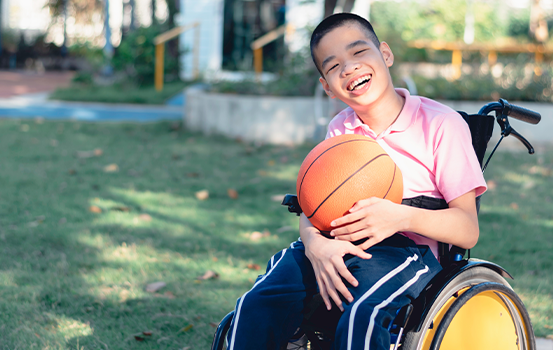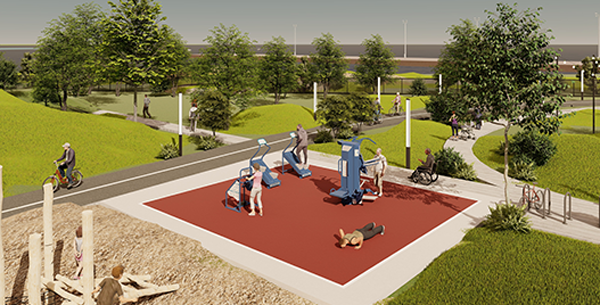The Difference Between Inclusive & Accessible Outdoor Fitness Parks
An accessible outdoor fitness park and an inclusive outdoor fitness park both aim to cater to a diverse range of users, including those with disabilities or different needs. However, there are differences between the two that are sometimes confused for the other. Let’s look at the some of the features that make inclusive and accessible fitness parks different.
Accessible Outdoor Fitness Parks
An accessible outdoor fitness park primarily focuses on providing physical access to individuals with disabilities or mobility challenges. The emphasis is on removing physical barriers to entry and participation, ensuring equal access for all users.
This ensures that the infrastructure, pathways, and outdoor fitness equipment are positioned in a way that allows people with disabilities to enter, navigate, and use the facilities comfortably and safely. This may involve features such as ramps, widened pathways, and smooth surfacing to accommodate wheelchair users or individuals with mobility aids. To make your outdoor fitness park accessible, make sure the space you’ve identified for the equipment is large enough to include the equipment’s clearance space. Ensuring this criteria is met will also mean that your fitness park will comply with ASTM.

Inclusive Outdoor Fitness Parks
An inclusive outdoor fitness park goes beyond mere physical access and aims to create an environment where individuals of all abilities, backgrounds, and identities feel welcome, valued, and supported. The goal of inclusive fitness spaces is to foster a sense of community and belonging, regardless of individual differences.
In addition to physical accessibility, inclusive design considers the diverse needs, and preferences of users, including those with disabilities, different age groups, and all fitness levels, from newbies to experienced users.
Inclusive outdoor fitness parks involve offering a wide range of exercise options and equipment that cater to diverse needs and abilities, such as strength machines with easy transfer options, cardio equipment, functional training tools, and items with additional support. Inclusive design principles may also incorporate features such as clear signage, fitness programming, user-friendly instructions, and adjustable settings, to ensure that the space is usable and accommodating for everyone.
While an accessible outdoor fitness park focuses on removing physical barriers to access, an inclusive outdoor fitness park takes a broader approach, considering the diverse needs and experiences of users to create a welcoming and supportive environment. When designing an outdoor fitness park, think about both accessible and inclusive features in your design to create a fitness park that everyone will want to use and can use.
Example of an Inclusive and Accessible Fitness Park
The Pro Fitness Package by Outdoor-Fit embodies inclusivity and accessibility. Its 29’ x 28’ square foot pad, provides ample spacing and clear pathways for unhindered movement, accommodating wheelchair users. The versatility of the various equipment stations caters to individuals of any age who might be looking to engage in workouts of different intensities. Additionally, QR codes on all of the equipment’s instructional placards promotes inclusivity. The Pro Fitness Package promotes community engagement, encouraging people of different backgrounds to come to together to pursue their health and wellness goals.


